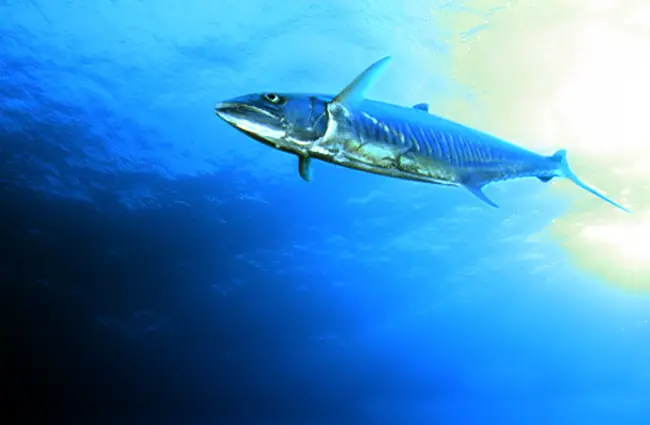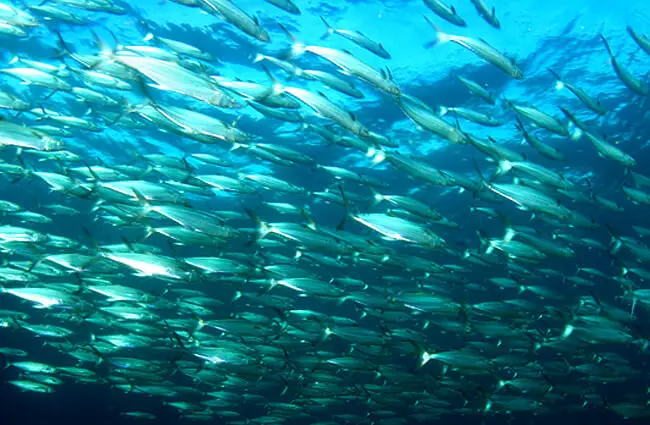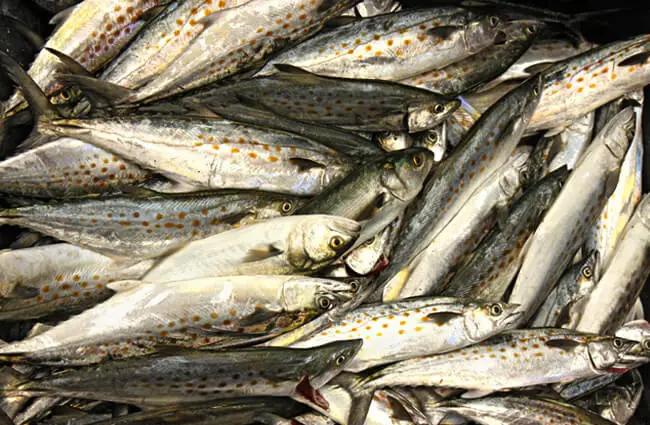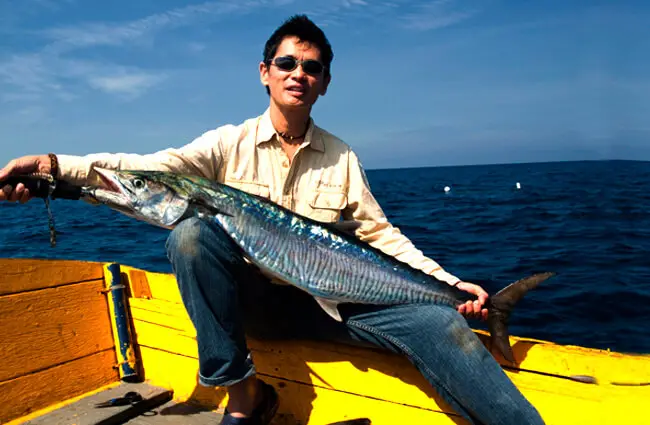Beneath the shimmering surface of coastal waters, a silver flash often signals the presence of one of the ocean’s most dynamic predators: the Spanish Mackerel. Renowned for its speed, agility, and striking appearance, this magnificent fish is far more than just a prized catch for anglers. It plays a vital role in marine ecosystems and offers a fascinating study for anyone interested in the intricate dance of life in the sea. From its impressive migrations to its unique hunting strategies, the Spanish Mackerel embodies the power and beauty of the aquatic world.

Understanding the Spanish Mackerel: A Coastal Marvel
The Spanish Mackerel, scientifically known as Scomberomorus maculatus, is a member of the Scombridae family, which also includes tunas and other mackerels. These fish are built for speed, boasting a sleek, torpedo-shaped body that allows them to cut through water with remarkable efficiency. Their iridescent silver flanks are typically adorned with distinctive bronze or yellow spots, fading into a darker, often greenish-blue back.
Where They Call Home: Habitat and Distribution
Spanish Mackerel are primarily found in the western Atlantic Ocean, ranging from the coastal waters of Nova Scotia, Canada, down to the Yucatán Peninsula in Mexico. Their preferred habitat includes nearshore coastal waters, estuaries, and bays, particularly areas with sandy bottoms or seagrass beds. They are a highly migratory species, undertaking extensive seasonal movements. During warmer months, they are abundant in northern latitudes, moving south to warmer waters like those off Florida and in the Gulf of Mexico as temperatures drop. This migratory pattern is crucial for their survival, allowing them to follow optimal feeding grounds and spawning areas.

The Hunter’s Diet: What Fuels Their Speed
As opportunistic predators, Spanish Mackerel have a diet primarily consisting of smaller schooling fish. Their menu includes species like menhaden, anchovies, sardines, herrings, and silversides. They are also known to consume squid and shrimp. Their hunting strategy is a spectacle of coordinated attack: Spanish Mackerel often form large schools to herd their prey, then surge through the panicked baitfish, snapping them up with their sharp teeth. This efficient feeding behavior makes them a significant predator in their coastal environments.
Spotting the Silver Streak: Key Identifying Features
For those hoping to observe Spanish Mackerel in their natural habitat, or for students needing precise identification, several features stand out. They typically grow to about 1 to 2 feet in length and can weigh between 2 to 10 pounds, though larger specimens are occasionally caught. The most distinguishing characteristic is the pattern of elliptical, brassy spots along their sides, which are generally larger and more pronounced than those found on similar species like the King Mackerel. Unlike King Mackerel, Spanish Mackerel lack a lateral line that dips sharply below the second dorsal fin. Their first dorsal fin is also typically dark or black at the front, fading to white. Observing these details can help an animal lover or aspiring zoologist correctly identify this species.

Life’s Journey: Reproduction and Social Dynamics
The life cycle of the Spanish Mackerel is a testament to marine resilience, involving complex reproductive strategies and social behaviors.
Mating and Reproduction: A Cycle of Life
Spanish Mackerel typically reach sexual maturity around two years of age. Spawning occurs in batches over several months, usually from April to September, in warmer offshore waters. Females release hundreds of thousands to millions of eggs, which are then externally fertilized by males. The eggs are pelagic, meaning they float freely in the water column, drifting with currents. After hatching, the larval mackerel are tiny and vulnerable, feeding on zooplankton. They grow rapidly, developing into juveniles that eventually join schools of adults. This high reproductive output is a common strategy among many marine fish to ensure species survival despite high predation rates on eggs and larvae.

The Power of Numbers: Schooling Behavior
Spanish Mackerel are highly social fish, typically found in large, fast-moving schools. This schooling behavior offers several advantages. It provides protection against predators, as a large group can confuse an attacker and dilute the risk for any individual fish. It also enhances hunting efficiency, allowing them to cooperatively herd and ambush prey. These schools can be observed near the surface, often indicated by diving birds or disturbances in the water, a useful tip for anyone trying to locate them in the wild.
The Spanish Mackerel’s Place in the Ecosystem
Every species plays a role in the intricate web of life, and the Spanish Mackerel is no exception. Its presence significantly influences the health and balance of coastal marine environments.
Contribution to the Ecosystem: A Vital Link
As both a predator and a prey species, Spanish Mackerel are a crucial link in the marine food web. They help control populations of smaller schooling fish, preventing overpopulation and maintaining ecological balance. In turn, they serve as a food source for larger predators, including sharks, dolphins, and larger fish like tuna and barracuda. Their migratory patterns also facilitate the transfer of energy and nutrients across different regions of the ocean, contributing to the overall productivity of coastal ecosystems.
Interactions with Other Animals
Spanish Mackerel’s interactions extend beyond simple predator-prey dynamics. Their schooling behavior often attracts other marine life. For instance, seabirds frequently dive into schools of mackerel that are feeding on baitfish, taking advantage of the commotion. Larger predatory fish may also follow mackerel schools, hoping to pick off stragglers. This creates a dynamic, multi-species feeding frenzy that is a spectacular sight for any marine observer.
An Evolutionary Tale of Speed
The Spanish Mackerel’s lineage is part of a long evolutionary history characterized by adaptations for speed and predatory efficiency.
A Legacy of Swiftness: Evolutionary History
Belonging to the family Scombridae, Spanish Mackerel share a common ancestor with other fast-swimming pelagic fish. Their streamlined bodies, powerful caudal (tail) fins, and finlets along the dorsal and ventral surfaces are all evolutionary adaptations designed to minimize drag and maximize propulsion. This evolutionary path has allowed them to thrive as highly effective pursuit predators in open water environments, a testament to millions of years of natural selection favoring speed and agility.
Spanish Mackerel and Humanity: A Shared History
For centuries, Spanish Mackerel have intersected with human culture, providing sustenance, recreation, and economic opportunities.
Fishing and Recreation: A Prized Catch
Spanish Mackerel are immensely popular among recreational anglers due to their fighting spirit and delicious flesh. They are targeted using various methods, including trolling, casting, and jigging. Commercial fisheries also harvest Spanish Mackerel, contributing significantly to local economies. Sustainable fishing practices, including size limits and bag limits, are crucial to ensure healthy populations for future generations. For a student researching human interaction, the balance between recreational enjoyment and conservation is a key area of study.

Culinary Delights: A Taste of the Ocean
Beyond the thrill of the catch, Spanish Mackerel are highly valued for their culinary qualities. Their firm, flaky, and flavorful white meat is versatile and can be prepared in numerous ways: grilled, baked, fried, or smoked. It is a staple in many coastal cuisines, contributing to the cultural heritage of communities along its range. This fish offers a healthy source of protein and omega-3 fatty acids, making it a nutritious choice for seafood lovers.

Conservation and Interaction: Respecting Wildlife
While generally not considered endangered, Spanish Mackerel populations are managed to prevent overfishing. Conservation efforts focus on monitoring stock levels and implementing regulations. If a hiker or beachgoer encounters a Spanish Mackerel in the wild, perhaps washed ashore or stranded, the best course of action is to observe from a distance and contact local wildlife authorities or marine rescue organizations. Direct intervention without proper training can cause more harm than good to the animal and potentially to the person. Always prioritize the animal’s safety and your own.
Fascinating Facts and Practical Insights
The Spanish Mackerel holds many intriguing secrets and presents unique challenges and rewards for those who study or care for them.
A Huge List of Interesting Facts About Spanish Mackerel
- Incredible Speed: Spanish Mackerel are among the fastest fish in the ocean, capable of bursts of speed exceeding 30 miles per hour.
- Sharp Teeth: Their mouths are equipped with numerous small, sharp teeth, perfectly adapted for slicing through baitfish.
- No Swim Bladder: Unlike many fish, Spanish Mackerel lack a swim bladder, meaning they must constantly swim to maintain buoyancy. This contributes to their active lifestyle.
- Temperature Sensitive: They are highly sensitive to water temperature, which dictates their extensive migratory patterns. They prefer waters between 68-78°F (20-26°C).
- Short Lifespan: Spanish Mackerel typically live for about 5 to 8 years, with some individuals reaching up to 10 years.
- Schooling Giants: While often seen in large schools, individual Spanish Mackerel can grow quite large, with the current world record standing at over 13 pounds.
- Predator of Predators: Their aggressive feeding behavior can sometimes lead them to strike at lures larger than themselves, demonstrating their voracious appetite.
Finding Spanish Mackerel in the Wild: Tips for Animal Lovers
For an animal lover aiming to find Spanish Mackerel in the wild, understanding their behavior and habitat is key:
- Timing is Everything: Look for them during warmer months in northern regions, or year-round in warmer southern waters.
- Coastal Hotspots: Focus on nearshore coastal waters, around inlets, jetties, piers, and artificial reefs.
- Observe the Signs: Keep an eye out for diving birds, which often indicate schools of baitfish being pursued by mackerel. Surface disturbances or “nervous water” can also signal their presence.
- Early Morning/Late Afternoon: These are often prime feeding times when mackerel are most active.
- Clear Water: While they can be found in various water conditions, clear water often provides better visibility for spotting schools.
Caring for Spanish Mackerel in Captivity: A Zookeeper’s Guide
Caring for Spanish Mackerel in a captive environment, such as a large public aquarium, presents unique challenges for zookeepers:
- Tank Size: Due to their active, fast-swimming nature and schooling behavior, Spanish Mackerel require very large, open tanks with ample swimming space. Circular or oval tanks are preferred to prevent collisions with corners.
- Water Quality: Maintaining pristine water quality is paramount. This includes stable temperature (mimicking their natural range), salinity, pH, and dissolved oxygen levels. Robust filtration and regular water changes are essential.
- Diet: A varied diet of high-quality, appropriately sized whole fish (e.g., silversides, sardines) and squid should be provided. Supplementation with vitamins may be necessary. Feeding should mimic natural hunting behaviors where possible.
- Social Environment: They thrive in schools, so keeping multiple individuals together is crucial for their well-being and to reduce stress. Introducing them gradually and monitoring interactions is important.
- Enrichment: While their constant swimming provides some enrichment, ensuring a dynamic environment with appropriate water flow and occasional changes in feeding presentation can stimulate natural behaviors.
- Avoid:
- Overcrowding: This leads to stress, aggression, and poor water quality.
- Sudden Changes: Rapid fluctuations in water parameters or tank mates can be detrimental.
- Incompatible Tank Mates: Avoid housing them with very aggressive species or very small, delicate fish they might prey upon.
- Sharp Decorations: Their high speed makes them prone to injury from sharp or abrasive tank decor.
The Enduring Legacy of the Spanish Mackerel
From its sleek form built for speed to its vital role in the marine food web, the Spanish Mackerel is a truly remarkable creature. It embodies the dynamic energy of coastal ecosystems, serving as a testament to the power of evolution and the interconnectedness of life. Whether observed by an aspiring zoologist, sought by an avid angler, or simply appreciated for its ecological contributions, this silver streak of the ocean continues to captivate and inspire. Understanding and respecting the Spanish Mackerel is not just about appreciating one species; it is about recognizing the delicate balance of our marine world and our shared responsibility to protect it for generations to come.

![Red Angus Closeup of a beautiful Red Angus cowPhoto by: U.S. Department of Agriculture [pubic domain]https://creativecommons.org/licenses/by/2.0/](https://animals.net/wp-content/uploads/2020/03/Red-Angus-4-238x178.jpg)




![Red Angus Closeup of a beautiful Red Angus cowPhoto by: U.S. Department of Agriculture [pubic domain]https://creativecommons.org/licenses/by/2.0/](https://animals.net/wp-content/uploads/2020/03/Red-Angus-4-100x75.jpg)

